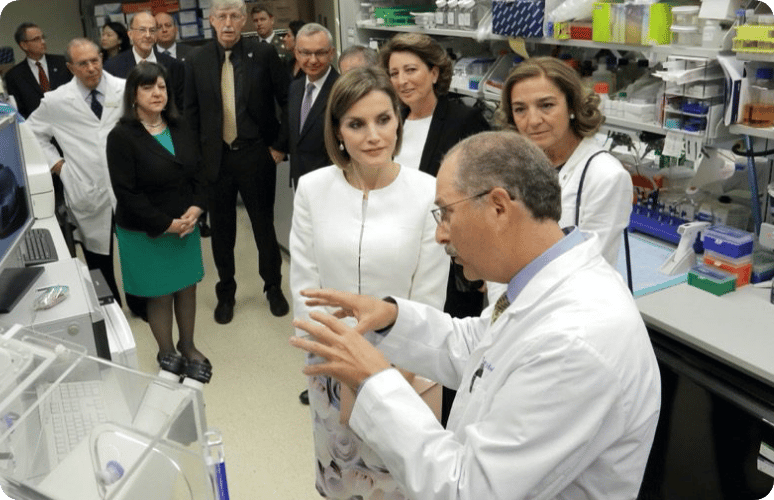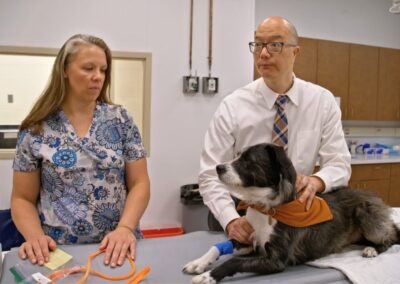“Dogs develop osteosarcoma in ways that closely resemble the human disease,” says Chand Khanna, DVM, PhD, a veterinary oncologist and chair of the Osteosarcoma Institute’s Strategic Advisory Board. “The tumors grow in the same locations, look the same under a microscope, and often spread to the lungs, just as they do in children.”
Osteosarcoma most often affects the long bones of large-breed dogs, particularly around growth plates near the knees and shoulders. Bone cancer symptoms in dogs typically include lameness or swelling. While osteosarcoma can occur in cats and other animals, those tumors are biologically distinct and less likely to spread.
A New Approach to a Persistent Challenge
In addition to his experience treating dogs in his own practices, Dr. Khanna was an NIH scientist and the founding director of the National Cancer Institute’s Comparative Oncology Program. This dual role has shaped his unique perspective on translational research. Dr. Khanna continues this work as the co-founder and board chair of Ethos Discovery, a not-for-profit incubator of scientific innovation focused on solving complex medical problems across species.
“My scientific career has focused on childhood cancer drug discovery, particularly in osteosarcoma,” Dr. Khanna says. “At the same time, I care for dogs and cats with cancer. That dual perspective allows me to ask questions and explore approaches that may benefit both humans and animals.”
Recognizing the promise of this work, the OSI has increased its support for canine osteosarcoma research. One recently completed study at the University of Minnesota assessed whether radiation therapy combined with an immune-enhancing agent could safely and effectively treat osteosarcoma in dogs. Another study at Northwestern University Feinberg School of Medicine and the University of Illinois is currently evaluating new treatment strategies using canine models.
Still, more funding is needed to advance this work. “We have made major inroads, but progress now needs to more effectively integrate the work in dogs and children with osteosarcoma,” Dr. Khanna says.
Translational Research in Action: The MIMIC Clinical Trial
One of the most promising canine cancer research studies currently underway is the MIMIC clinical trial, led by Ethos Discovery as part of a planned collaboration with OSI. This canine clinical trial explores the use of a minimally invasive surgical approach called Video Assisted Thoracoscopic Surgery to remove metastatic tumors from the lungs of canine osteosarcoma patients. This technique is being evaluated as a potential alternative to more invasive procedures, with the goal of reducing recovery time and surgical risk while maintaining treatment efficacy and creating new opportunities for drug development.
“This is a critical step forward,” Dr. Khanna explains. “It allows us to assess the therapeutic benefit of this technique in dogs and ultimately apply those findings to accelerate the development of treatments for human patients.”
Additionally, the trial is collecting tissue samples to study the biology of metastatic osteosarcoma and to identify biomarkers that could inform future drug development in both canine and human osteosarcoma patients.
Why Dogs Matter in the Search for a Cure for Osteosarcoma
Despite decades of research, treatment outcomes for osteosarcoma have remained largely unchanged. This reality, Dr. Khanna says, is why researchers are looking beyond traditional approaches.
“Nature has given us an opportunity in the form of dogs with osteosarcoma,” he says. “By studying the disease in dogs — where it occurs more frequently, progresses more quickly, and responds to similar treatments — we can ask questions that cannot be asked in conventional cancer models or human clinical trials alone.”
With continued investment and collaboration, canine osteosarcoma research may not only improve care for dogs but will also help bring long-awaited breakthroughs to children and young adults facing this devastating disease.







